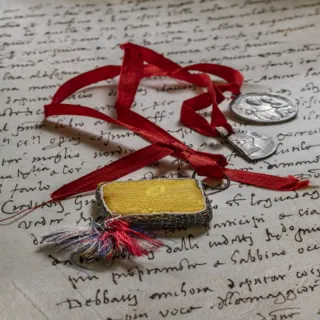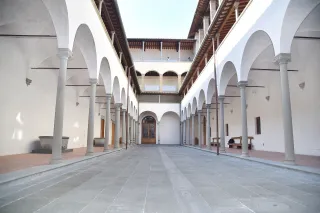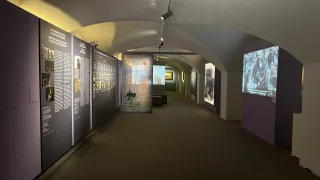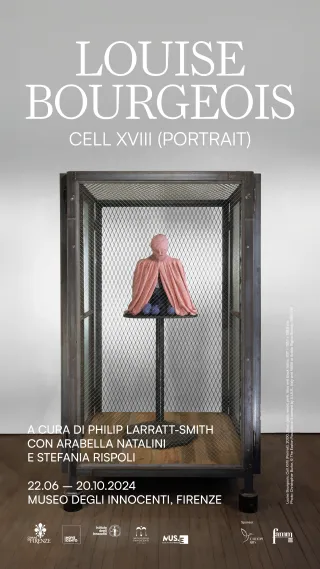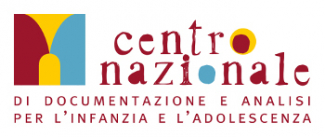The Frescoes Gallery Reopens to the Public
20 May 2025
Area di attività
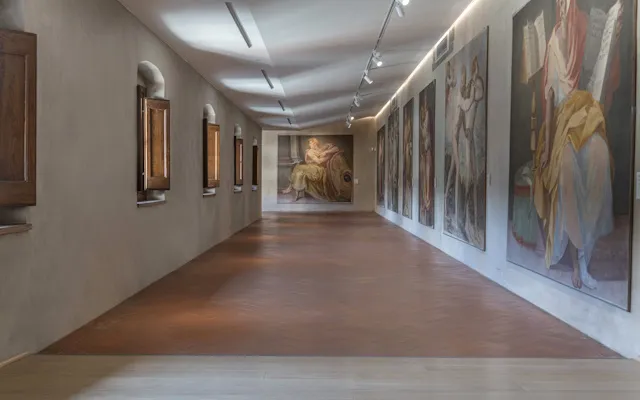
The Frescoes Gallery of the Istituto degli Innocenti, part of the original building designed and built by Filippo Brunelleschi, reopens to the public after decades and becomes part of the permanent museum itinerary of the Innocenti Museum. The Gallery is an important piece of the organisation's history, which is being returned to the citizenship following a redevelopment project presented in August 2023.
The new spaces - open to all visitors from 22 May and officially part of the museum itinerary from 23 May - were inaugurated today in the presence of Maria Grazia Giuffrida, Chairwoman of the Istituto degli Innocenti; Eugenio Giani, President of the Tuscany Region; Sara Funaro, Mayor of Florence; Simona Pasquinucci, Head of the Curatorial Division of the Uffizi Galleries; and Sabrina Breschi, General Director of the Istituto degli Innocenti, with the patronage of the Municipality of Florence.
The Gallery and the Prior’s Rooms, located along the inner quadrangle of the architectural complex of the Istituto degli Innocenti, overlook the portico of the Men’s Courtyard and, over the centuries, have served various functions, including housing offices and other administrative activities. In 1971, the rooms housed a group of sinopias and detached frescoes deposited by the Superintendency of the Florentine Galleries - now the Uffizi Galleries - following the 1966 Florence flood.
A total of 28 works are preserved in the Gallery: 27 sinopias and detached frescoes are held on deposit, including two particularly significant groups: the late 16th-century painting cycle by Alessandro Allori and his workshop, and two fine mural paintings by Lorenzo Monaco dating back to the early 15th century. Additionally, the Dispute of Saint Catherine of Alexandria with the Philosophers by Bernardino Poccetti, which is owned by the Institute, is also on display. Many of these works - dating from approximately the 13th to the 18th century - had previously been kept in the Cenacle of San Salvatore in the Church of Ognissanti. Following the Florence Flood of 1966, they were restored and entrusted to the Istituto degli Innocenti, coinciding with the relocation and reorganisation of the Innocenti Museum on the first floor.
The Gallery has been made fully accessible, and the exhibition layout has been completely redesigned and updated. It now follows a primarily chronological and thematic arrangement, with a set up that highlights the collection and allows for close-up viewing of the works of art thanks in part to their placement on the walls at a lowered height. Wherever possible, previous placements have been preserved, offering a historical reading over time. Informative panels accompanying the visit provide insights into both the rooms and the works of art, with in-depth explanations of fresco painting and restoration techniques.
The Redevelopment Project
The redevelopment project, presented in August 2023 and funded with €498,603.20 under the Ministry of Culture’s PNRR M1C3-3 / Investment 1.2 for the “Removal of physical and cognitive barriers in public museums and cultural sites not belonging to the Ministry,” was carried out with the Institute’s own resources. It enabled the completion of works to make the new spaces fully accessible and usable, along with measures to enhance the value of the artworks housed within them.
The redevelopment was geared towards removing not only architectural barriers but also cognitive ones. In addition to the Frescos Gallery, the redevelopment also involved the Nuns' Chapel, rediscovering its privileged view of the Church of Santa Maria degli Innocenti, and the two Prior's Rooms, which were completely renovated, furnished and equipped with the necessary technology for holding cultural activities and small exhibitions.
Conservation and Research
Prior to the works, the detached frescoes of the Gallery were removed from the walls where they were located and temporarily housed in a specially designated indoor storage area. Both the works in the collection and Bernardino Poccetti 's fresco of the Dispute of St. Catherine of Alexandria painted in the vestibule preceding the Prior's Rooms have undergone meticulous extraordinary maintenance involving various types of cleaning, consolidation and pictorial retouching. A new bracket system was therefore set up.
Accessibility and Tools
The intervention expanded accessibility and enjoyment of the works of art inside them by people with disabilities. The tactile tour for blind and visually impaired visitors was thus extended, enriched by two tactile reproductions in four-colour printing and Braille: one dedicated to Bernardino Poccetti’s fresco located in the vestibule before the Prior’s Rooms, and the other displayed in the Art Gallery, featuring the famous Putti in swaddling clothes by Andrea della Robbia.
The expansion of accessibility included, among other initiatives, the development of a new easy-to-read guide for the Museum - which also covers the Frescoes Gallery - aimed at people with intellectual disabilities; the renewal of signage throughout the museum route; and the creation of a new website for the Museum in both Italian and English https://www.museodeglinnocenti.it/. The Frescoes Gallery has also been equipped with informational panels and captions designed to ensure readability and comprehension of the works of art.
Works in the Gallery
Of particular importance is the pictorial cycle created by Alessandro Allori and his workshop for the chapel of the Women’s Hospital of Santa Maria Nuova in 1576, featuring episodes from the Old Testament and six monumental figures of prophets, which evoke Michelangelo’s frescoes of the Sistine Chapel in the Vatican.
From the Gallery, visitors access the small oratory commonly known as Little Chapelor Nuns’ Chapel, built in 1955 after the internal chapel - located in the Women’s Courtyard - was repurposed as a classroom for the School of Childcare.
The space, entirely renovated and featuring a newly uncovered view of the Church of Santa Maria degli Innocenti, now houses some of the most valuable detached frescoes held in deposit at the Innocenti Museum since 1971. Among these are two remarkable works by Lorenzo Monaco (Piero di Giovanni, Florence, active 1391–1422): the fresco depicting The Crucified Christ between the Virgin and Saint John the Evangelist (1400–1410), and the powerful representation of Christ in Piety (1411–1413).
One wing of the Gallery is dedicated to sinopias and offers an in-depth look at fresco creation and restoration techniques. Here visitors can find 15th-century works by Bicci di Lorenzo (Madonna and Child between St. John the Baptist and Holy Monk, Saint Anthony Abbot, Madonna and Child between Saints Leonard and George) as well as the 17th-century Last Supper by Matteo Rosselli. In the vestibule leading to the Prior’s Rooms, visitors can admire Bernardino Poccetti’s fresco The Dispute of Saint Catherine of Alexandria with the Philosophers, created in 1612.
Last update: 06/20/2025 - 16:28

